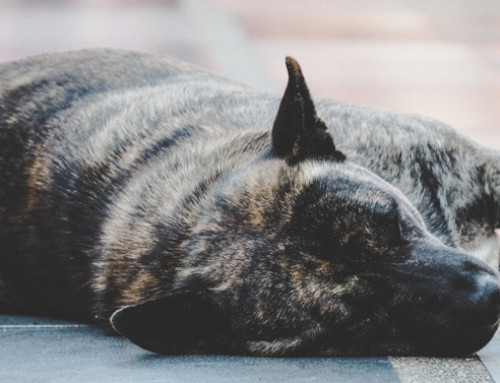Our pets can be like our children; we always want what’s best for them, but sometimes we’re not sure what that might be. Even if we do, the thought of doing what’s best for them may feel disturbing or difficult. Desexing your pet can cause this feeling in some people. Nobody likes to put their pet through surgery, especially to remove such a delicate part of their anatomy. The fact is, however, that desexing is the best thing for your dog for many reasons.
Controlling the population
In Australia, over 160,000 pets are placed in a shelter each year. The vast majority are due to pregnancies that were unplanned, and for which the owner was unprepared. Sadly, many of these animals may have to be destroyed. By having fewer unplanned pregnancies, the shelters will be less overtaxed and have more time and resources to devote to animals who need homes. Desexing will also prevent you from having to deal with an unplanned pregnancy by your own pet. Female dogs in heat bleed and are attractive to males who are looking for a mate. Desexing will immediately stop the cycle, and unwanted attention from male dogs will stop. A female dog can produce around 30 puppies in a year, and depending on how much he gets around and how many females are close by, there’s no telling how many of those puppies a male can sire.
Unwanted behaviours
Unwanted pregnancy isn’t the only thing you can prevent by desexing your dog. “Whole” dogs, those who have not been desexed, are also more likely to exhibit disruptive behaviours that are difficult to change. Desexed dogs have less of a tendency to be aggressive towards other people and dogs; it helps to subdue male dominance and territorial instincts. Dogs will be less likely to urinate on your floor or furniture to mark territory, mount people or objects, or get angry if a person or another dog comes near the property. This doesn’t mean that your well-trained guard dog will no longer be useful, however.
They will still have some territorial instincts, especially with proper training, they just will be more calm than if they were whole. Preventing roaming is another benefit of desexing. If your male is not in need, then they won’t try to escape the yard to find a mate. It should be said that roaming doesn’t only cause unwanted pregnancies, but will also put your dog at risk of injury from cars or other dogs.
Health issues
We all know that cancer is scary and dangerous for humans, but it’s also a big killer of dogs. Desexing a dog involves removing his testicles, therefore eliminating the chance of developing testicular tumours. Since the testicles are no longer producing male hormones, your dog will be at a much lower risk of developing prostate cancer and other diseases. Without these hormones, the dog’s prostate tissue develops with less prostatic tissue. Less tissue means less of a chance of developing issues relating to that issue. Female dogs are at a very high risk of getting mammary tumours if they are not desexed.
There is a chance that a female dog will develop a tumour after their 2nd cycle. Desexing eliminates the possibility of developing these tumours. Females are also very susceptible to a life threatening infection of their reproductive system, known as Pyometra. This infection causes pus to enter the urethra, sometimes filling it up. If it is caught in time, Pyometra may be treated by removing the uterus, but the longer the infection lingers, the more difficult treatment becomes. Infected dogs can be lethargic, depressed, vomit, and have rapid weight loss. Pyometra becomes more likely with every cycle, so it’s important to have your female dog desexed as early as possible.
Concerns?
As mentioned above, many of us treat our dogs like our own children. But it’s important to remember that dogs differ from humans in more than just the number of legs they have and the amount of fur. For instance, your female dog will not be sad if she is not able to have a litter. In fact, she’s likely to not even know what she’s missing. Dogs are also creatures that live in the present, so your female won’t be pining for lost possibilities. Males will not miss their equipment; it will become a new norm for them.
Other than the pain at time of surgery, dogs are unlikely to know what they’re missing. There is a common misconception that desexed dogs will become overweight and lazy. While it’s true that they’ll be less likely to try to climb the fence, they’ll still enjoy walks and playing in the yard. The only reason they will become overweight and lazy is if they are fed too much and not exercised enough.
Procedure
The desexing procedure itself is clean and safe for your pet. They’ll be given general anaesthesia to calm down and minimise the pain. For females, an incision will be made in the abdomen, and her ovaries and uterus will be removed. For males, the cut is made in the scrotum, and both testicles are removed. You will notice that some hair is shaven where the cuts were made. Dogs are generally kept for at least the rest of the day for monitoring, and sometimes may stay overnight. Once your dog is back home, keep an eye on the wound and stitches to ensure there is no infection. The dog will probably be sent home with a cone around their head to prevent licking. After ten days or so, the stitches can be removed and your dog can return to normal activities.
This article should have hopefully cleared any questions and concerns you may have had about desexing your dog, and given you the comfort to understand why it’s such a necessary and helpful procedure. Make sure to talk to your vet about getting this vital procedure done to help your dog stay healthy and safe.







Leave A Comment